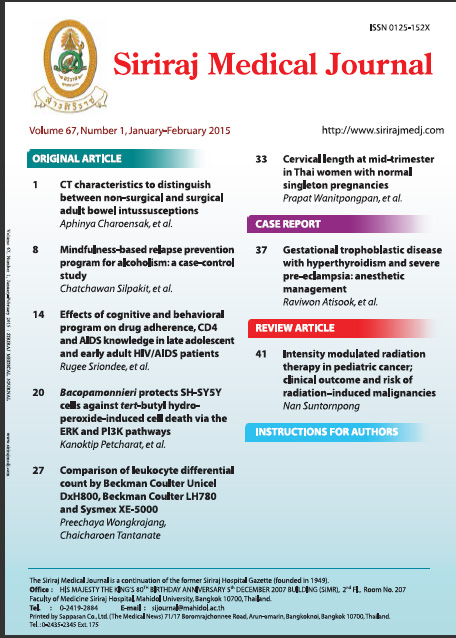Bacopamonnieri Protects SH-SY5Y Cells Against tert-Butyl Hydroperoxide-induced Cell Death via the ERK and PI3K Pathways
Abstract
Objective: Oxidative stress plays an important role in the pathological processes of various neurodegenerative diseases. Bacopa monnieri (BM) has a potent antioxidant property. Therefore, the purpose of this study was to evaluate the neuroprotective potential of BM against SH-SY5Y neuroblastoma cell death induced by the pro-oxidant insult, tert-Butyl hydroperoxide (TBHP), and to identify possible mechanisms related to its neuroprotective action.Methods: The neuroprotective effect of BM was evaluated by the degree of protection against TBHP-induced cell death in human SH-SY5Y cells that was measured by calcein-AM assay. ERK1/2 and Akt phosphorylation was evaluated by immunoblotting.
Results: We found that BM exhibited protection against TBHP-mediated cytotoxicity. The neuroprotective effect of BM was abolished in the presence of either ERK1/2 or PI3K inhibitors. In addition, western blotting with anti-phospho-ERK1/2 and anti-phospho-Akt antibodies showed that BM increased both ERK1/2 and Akt phosphorylation.
Conclusion: These results suggest that BM by activation of ERK/MAPK and PI3K/Akt signaling pathways protects SH-SY5Y cells from TBHP-induced cell death.
Keywords: Bacopa monnieri, tert-Butyl Hydroperoxide, SH-SY5Y cells, ERK1/2, PI3K
Downloads
Published
How to Cite
Issue
Section
License
Authors who publish with this journal agree to the following conditions:
Copyright Transfer
In submitting a manuscript, the authors acknowledge that the work will become the copyrighted property of Siriraj Medical Journal upon publication.
License
Articles are licensed under a Creative Commons Attribution-NonCommercial-NoDerivatives 4.0 International License (CC BY-NC-ND 4.0). This license allows for the sharing of the work for non-commercial purposes with proper attribution to the authors and the journal. However, it does not permit modifications or the creation of derivative works.
Sharing and Access
Authors are encouraged to share their article on their personal or institutional websites and through other non-commercial platforms. Doing so can increase readership and citations.










